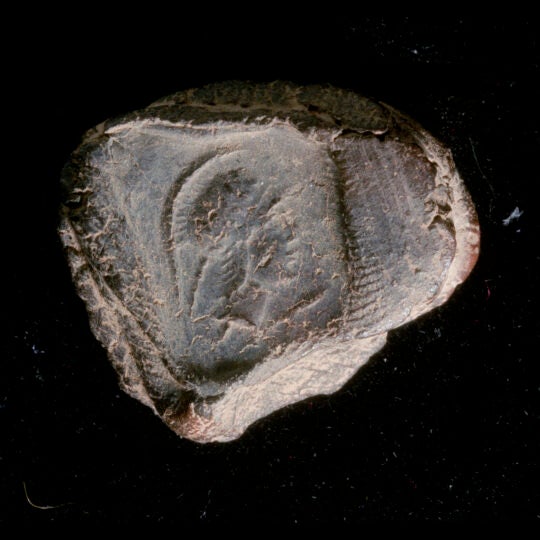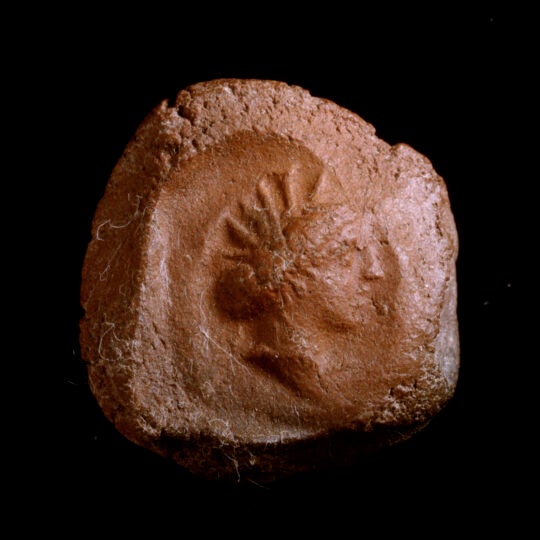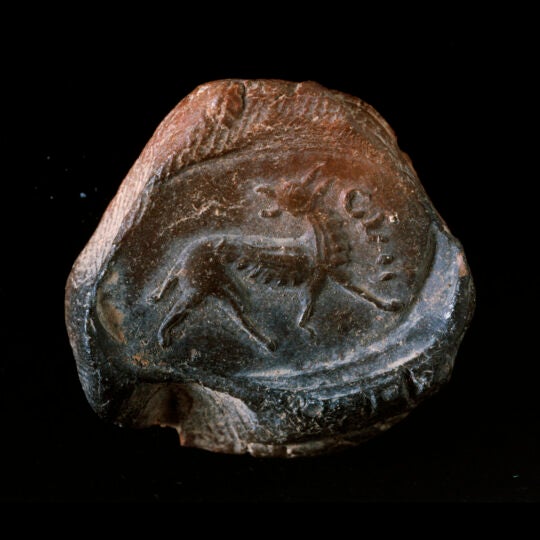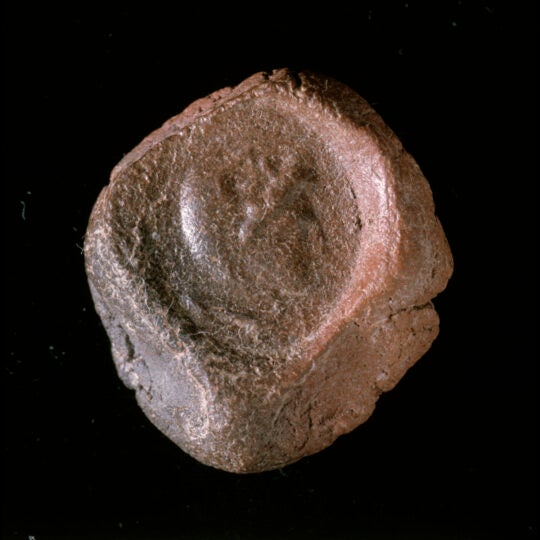Ancient seals contained carved images and sometimes words that would leave a mirror impression when stamped onto a soft surface, usually wet clay. The seals were used to “sign” documents with the unique seal of an individual such as the seller. They can be compared to a notarized signature today. The impression gave visual proof of the genuineness of the object.
Papyrus documents were often rolled and folded, after which string was tied around them, and seal impressions stamped at various points on the string. The impressions could also be used to prove no one had tried to open the document since it had left the hand of those who had made a will, contract, financial agreement, decree, or receipt for goods.
Stamped onto a person’s possessions, a seal impression could identify ownership of the object. They were also used in business to protect closed containers from tampering or theft or to seal storerooms full of grain to show if the room had been broken into or not.
Profile with “Trojan” Headdress
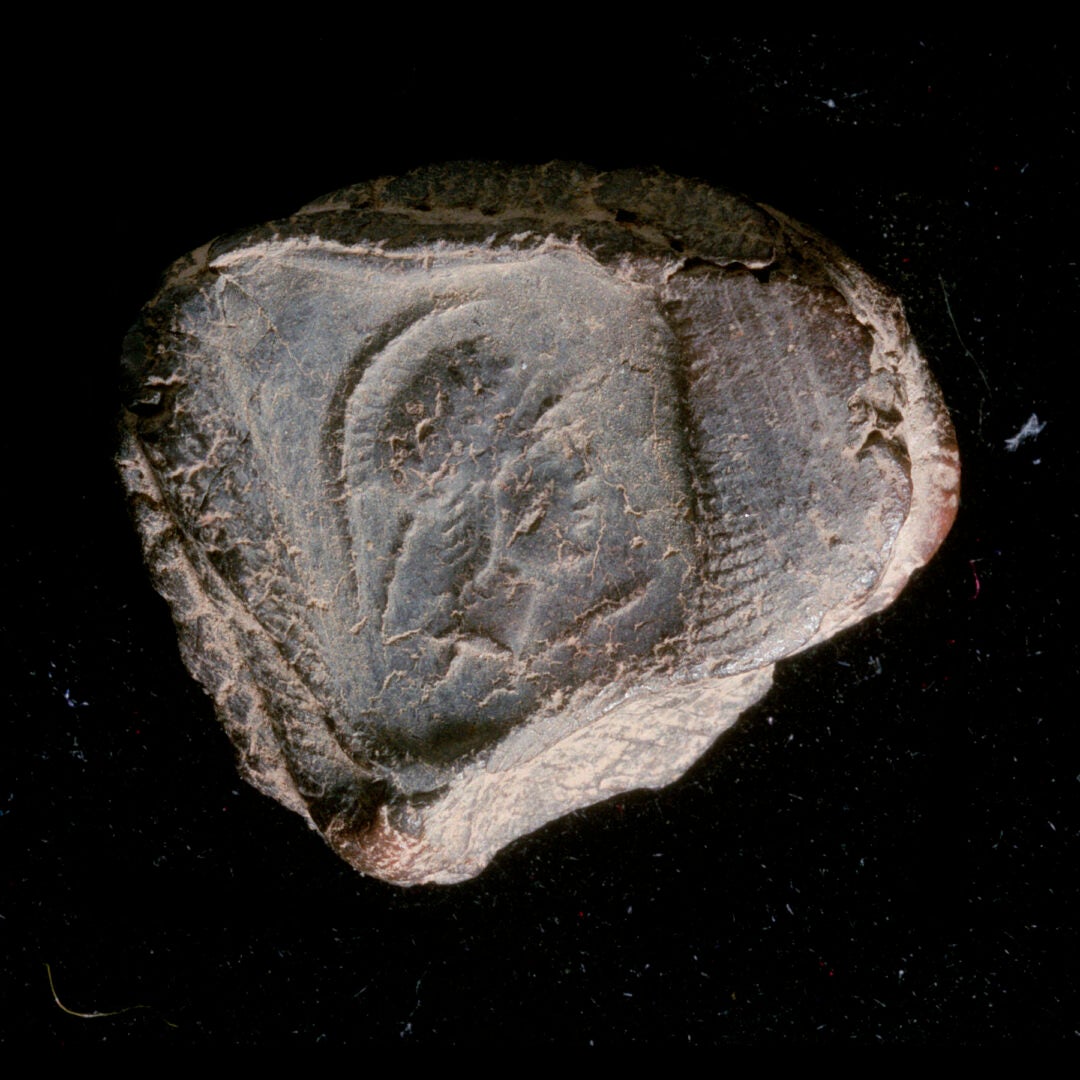
Bulla with Profile of a Woman–City Goddess?
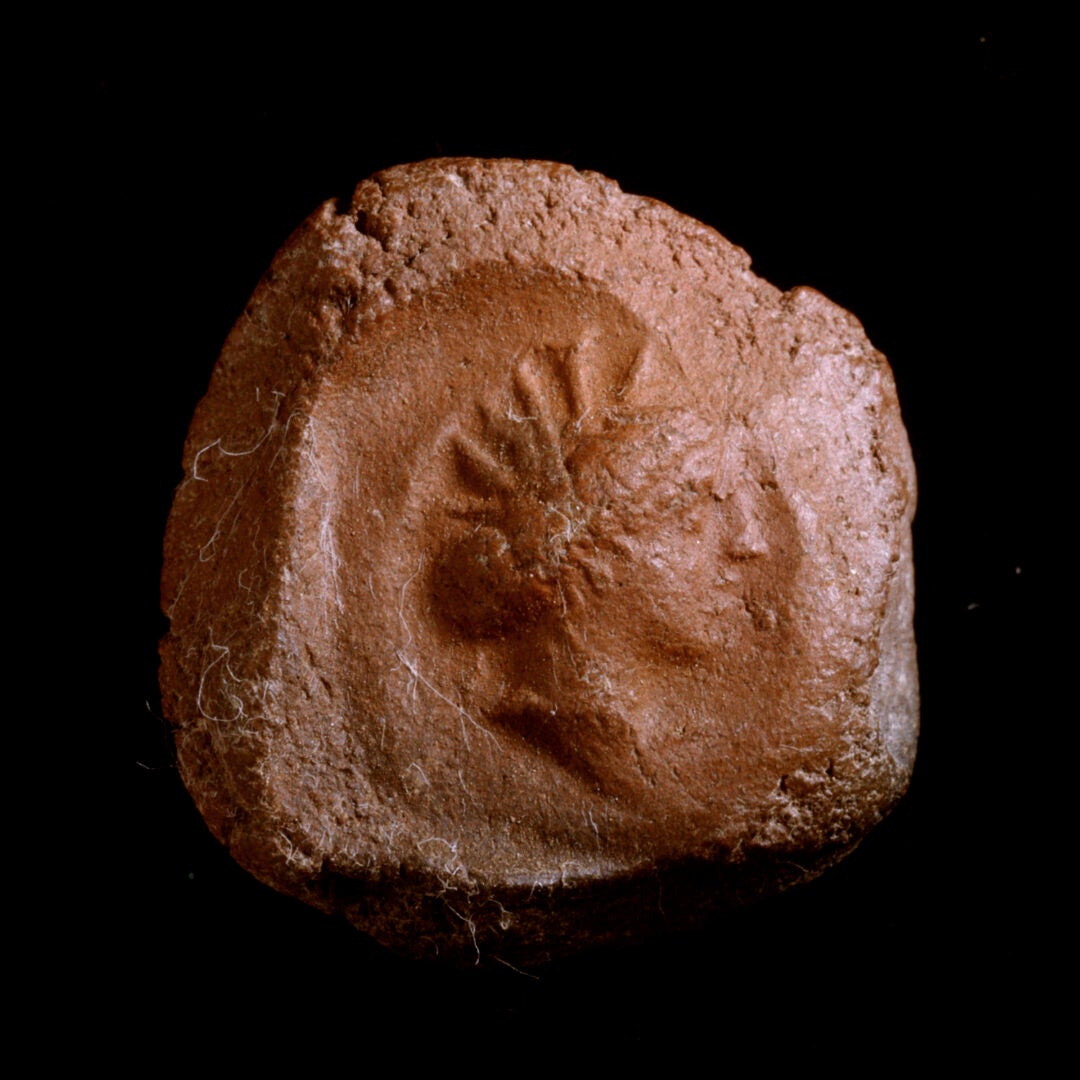
Inscribed Bulla with “Griffin”
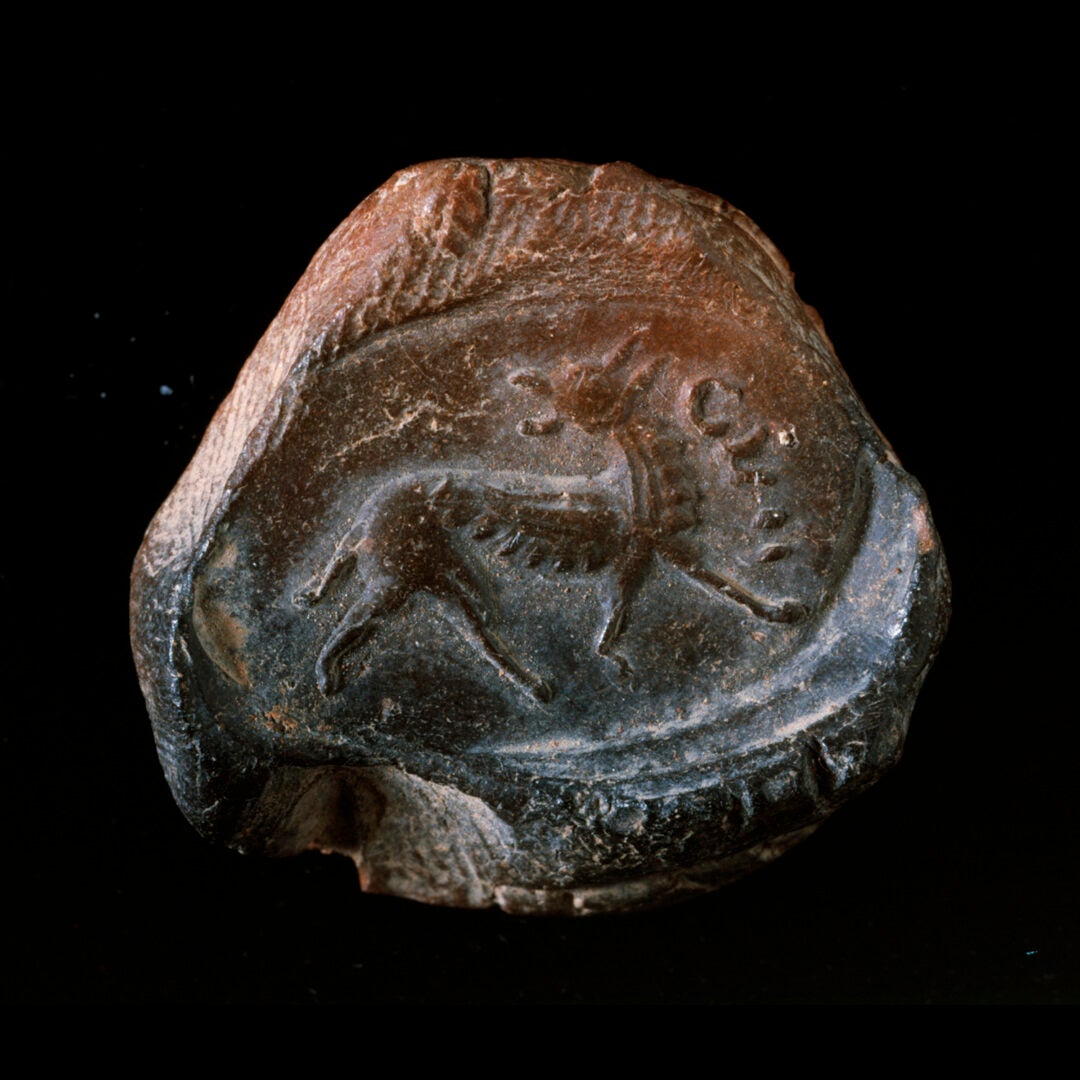
Bulla with “Janus” Head, View #1
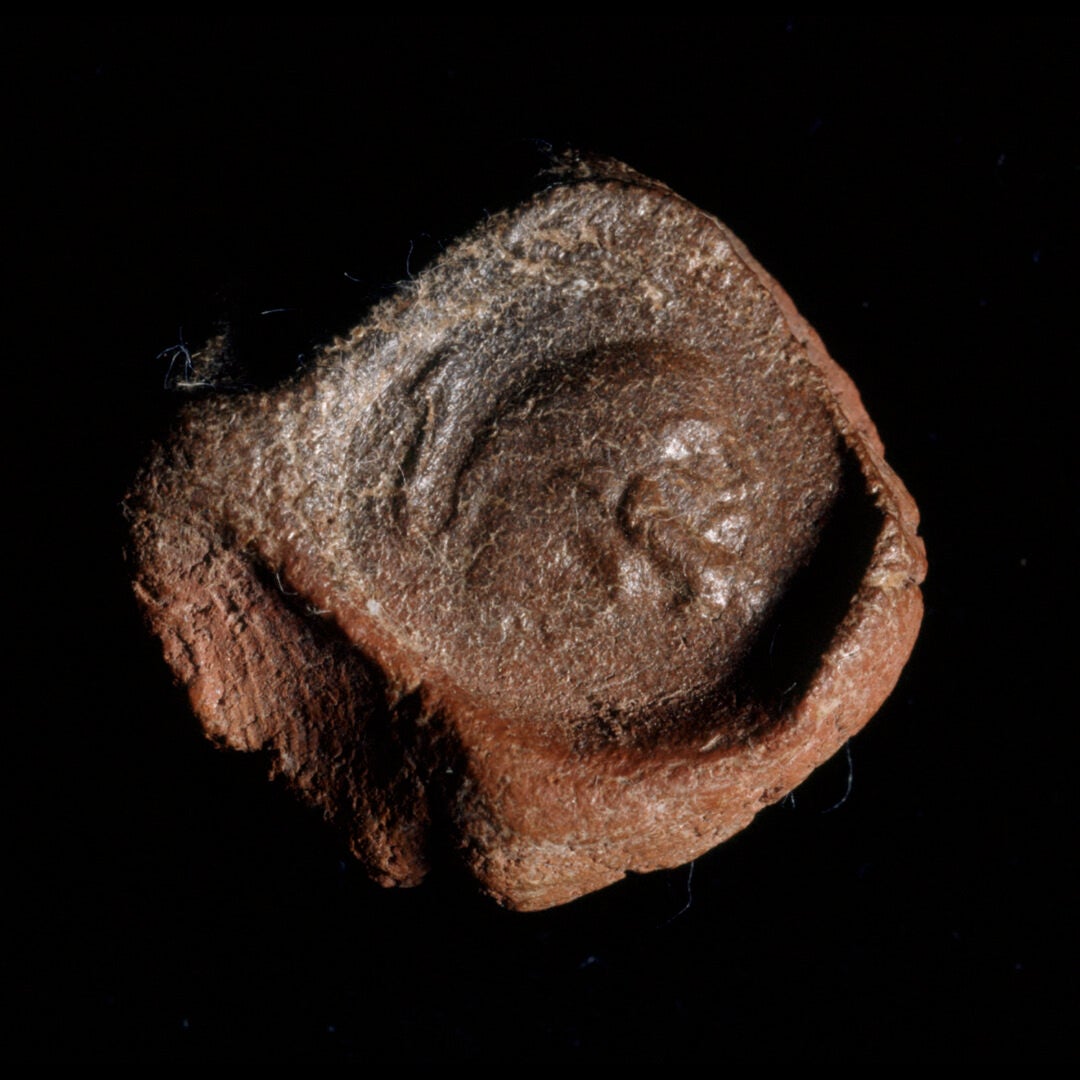
Bulla with “Janus” Head, View #2
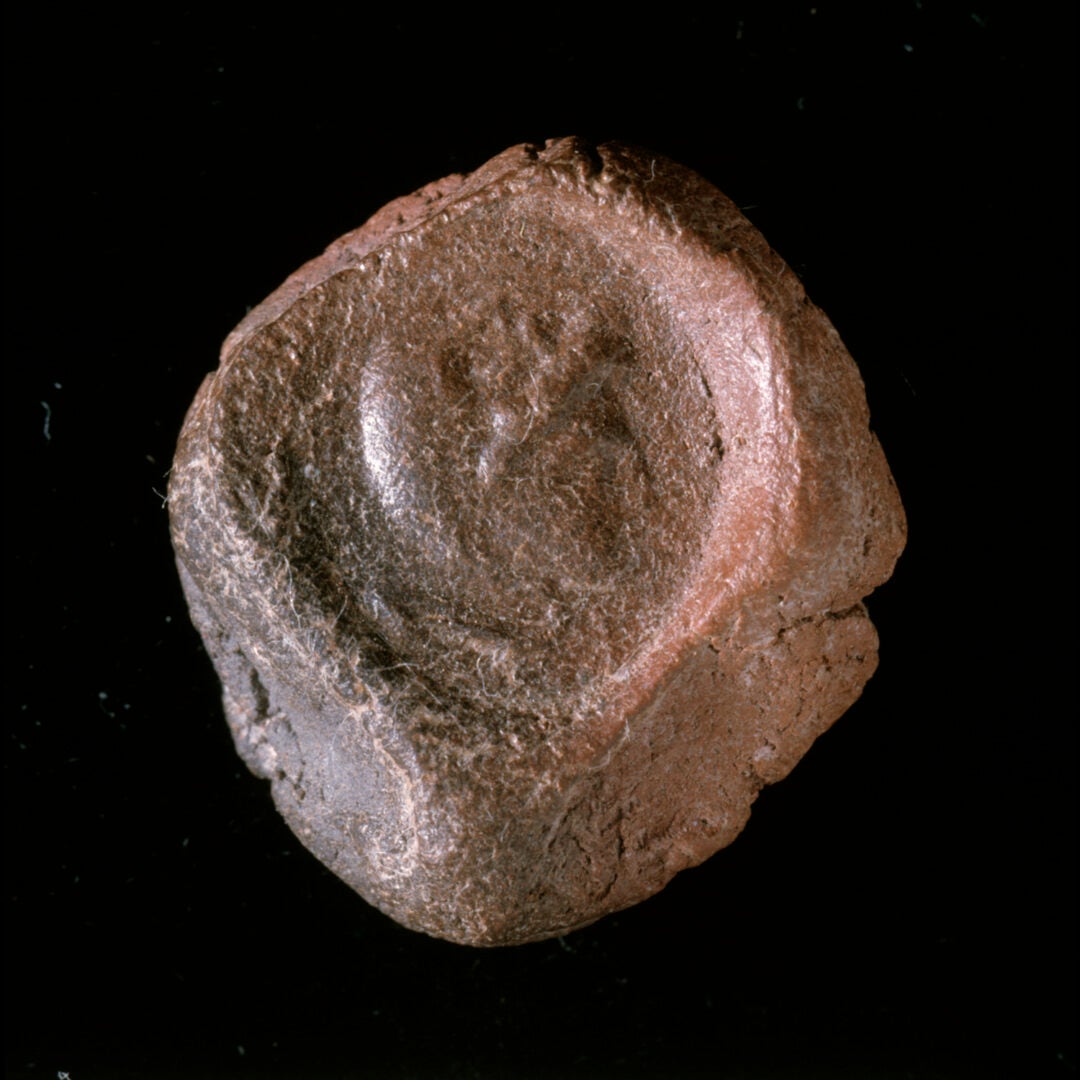
Bulla with Figure of Woman
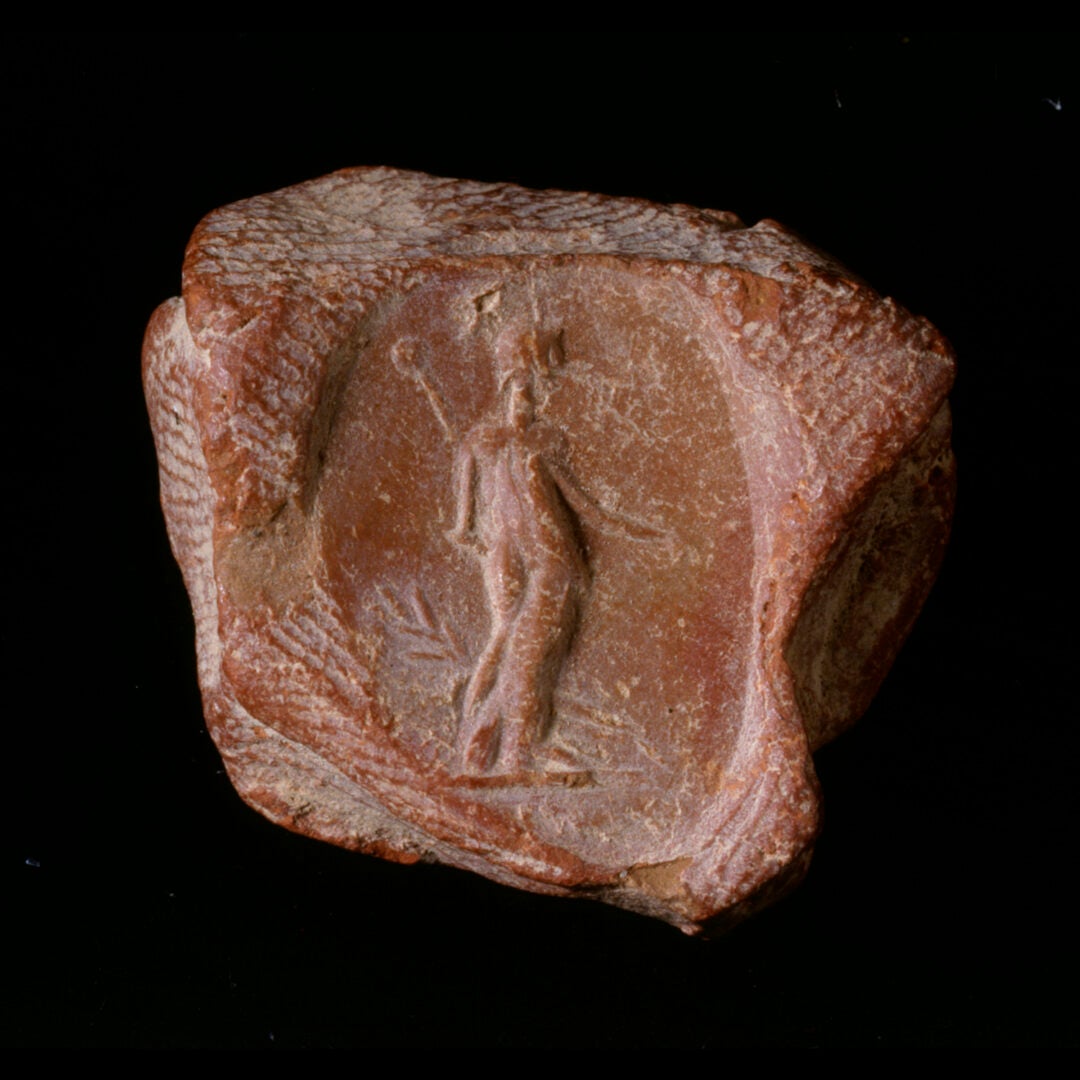
Inscriptions and Artifacts in the USC Archaeology Research Center
- Etruscan Lion Plaque Pendant A gold pendant from 650-600 B.C.
- Statue of Isis A gold statue of the Egyptian goddess Isis.
- Deity on a Bull A small sacred figurine from the area of Syria-Palestine.
- Egyptian Ushabti An ancient Egyptian representation of a mummy.
- Sasanian Seals Seals with animal designs from ancient Iran.
- Seals Assorted seals.
- Coins Caesar Vespasian and Alexander III Coins.
- Bullae Roman Period Bullae (Seal Impressions).
- USC Archaeology Research Center Web Site
Article Categories
Non-Biblical Ancient Texts Relating to the Biblical World: Non-biblical inscriptions and documents from ancient times that improve our understanding of the world of the Bible.
Biblical Manuscripts: Images and commentary on ancient and medieval copies of the Bible.
Dead Sea Scrolls: Images and commentary on selected Dead Sea Scrolls manuscripts.
USC Archaeology Research Center: Images of artifacts from the teaching collection of the University of Southern California.
